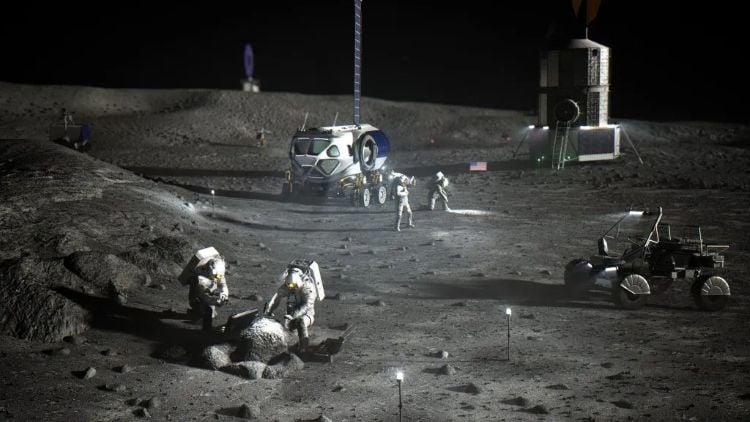Advancing Lunar Habitats: Thermoelectric Power Generation Innovations

A recent study published in Acta Astronautica explores how thermoelectric generators (TEGs) can enhance power efficiency for future lunar habitats. Researchers from the Republic of Korea examined a novel approach to improving power generation under the Moon’s extreme conditions. Their findings could be pivotal for mission planners and engineers tasked with supporting long-term human presence on the lunar surface and beyond.
The study focuses on the unique thermal environment of the Moon, where temperature fluctuations can reach as high as 121°C (250°F) during the lunar day and plunge to -133°C (-208°F) at night. This extensive temperature range is believed to create opportunities for greater efficiency in TEGs through a process known as transient-state operation. The researchers conducted a first-of-its-kind analysis of how a new TEG system would function in these conditions.
By implementing switching heat storage (HS) systems, also referred to as multiple-HS systems, the researchers discovered that power generation could increase by 48.9 percent in lunar conditions. This significant boost underscores the potential for TEGs to support a sustainable and long-term lunar habitat. The authors emphasize that developing reliable power sources is crucial for deep space exploration, particularly for missions aimed at establishing human bases on the Moon and Mars.
According to the study, scientists involved in initiatives like the Artemis project view a manned lunar base as essential for future missions throughout the solar system. Consequently, the ongoing development of efficient power sources is a primary focus of current research efforts. While the study evaluates various energy alternatives, such as Radioisotope Thermoelectric Generators (RTGs), it cautions against their use for extended missions due to the half-life decay associated with radioactive isotopes.
Despite their limitations, RTGs have a proven record of success. They powered instruments left on the lunar surface during the Apollo missions and continue to be utilized by NASA’s Curiosity and Perseverance rovers on Mars. Looking ahead, NASA plans to use RTGs for its upcoming Dragonfly mission, scheduled for launch in July 2028.
The researchers also briefly discuss the potential for solar and nuclear power as viable energy sources on the Moon. Nuclear fission reactors have been suggested for lunar applications, particularly in light of NASA’s objectives to establish a sustainable human presence through the Artemis program.
The relevance of this study is amplified by NASA’s vision for a long-term human settlement on the Moon, which ties into the broader goals outlined in the agency’s Moon to Mars Architecture. The advancement of technologies that facilitate in situ resource utilization (ISRU) is critical, as it allows missions to utilize local resources rather than relying on supplies transported from Earth. TEGs, in particular, could leverage the Moon’s extreme temperature differences to meet power generation needs effectively.
As humanity progresses towards establishing settlements beyond Earth, research such as this highlights a growing interest in adapting Earth-based technologies for extraterrestrial applications. TEGs may serve as a foundational power source for lunar habitats until more advanced systems can be developed.
The question remains: how will thermoelectric power generation evolve to support lunar habitats in the next few decades? The ongoing exploration and development of these technologies will be crucial as space agencies prepare for the challenges of deep space exploration.






